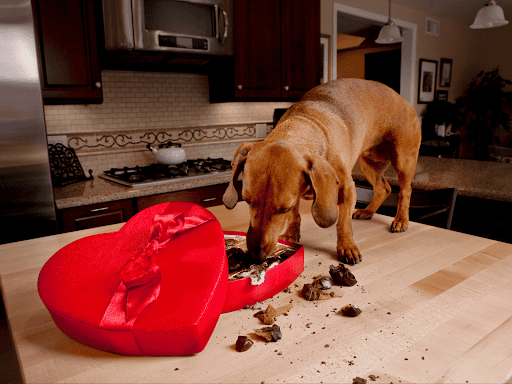10 Common Dog Eye Injuries to Watch for & When to Visit an Emergency Vet
What Causes Eye Injuries in Dogs?
A dog eye injury can occur for a number of reasons, including:
- Fights: If your pet gets into a squabble with another, it may result in an eye injury.
- Foreign Objects: Dust, dirt, or small debris can easily make their way into your dog’s eyes.
- Aging: As dogs age, they are more likely to develop cataracts or dry eye.
- Underlying Health Conditions: Certain health issues can increase the risk of eye injuries.
- Accidents: Mishaps can happen. Even something as simple as playing rough can cause eye injuries.
Dogs are always curious, playful, and, at times, a little too adventurous for their own good. One moment, they’re zooming through the park, and the next, they’re squinting or tearing up—signs that something might be wrong with their eyes. As a pet owner, it’s vital to know how to tell if a dog eye injury is serious or if it’s something you can treat at home.
Dog eye injuries are more common than you think. Some heal on their own, but others can lead to complications if left untreated. Let’s take a closer look at what pet owners need to know about identifying and treating a dog’s eye injury.
10 Common Dog Eye Injuries to Look Out For
Eye injuries in dogs can be mild, or they can be serious. Here are some of the most common eye injuries that dog owners should be on the watch for.
1. Corneal Ulcer
This is a painful wound on the surface of the eye. It’s often caused by infections, untreated dry eye, or even scratches. Common symptoms are squinting, redness, cloudy eye, tearing, or pawing at the face.
2. Scratched Cornea
This is a painful scratch on the other eye area, often from rough play or frequent rubbing. Symptoms may include rapid blinking, watery discharge, redness, and light sensitivity.
3. Pink Eye (Conjunctivitis)
“Pink eye” is a term for inflammation of the conjunctiva, a clear membrane covering the eye. Similar to humans, it can be caused by infections, allergies, or irritants. Visible signs are swelling, redness, yellow or green discharge, and excessive tearing.
4. Proptosis
This is a severe eye injury where a pet’s eye is popping out, usually due to dog eye trauma. Symptoms include a bulging eye, inability to blink, and severe swelling.
5. Foreign Objects
Everyday objects like dust, sand, or other debris can get trapped in your dog’s eye. Excessive blinking, watery eyes, squinting, and frequent rubbing are common signs of this.
6. Eye Bleeding (Hyphema)
This is internal bleeding in the eye and is often caused by trauma, high blood pressure, or clots. Some signs may be a blood-filled eye and vision problems.
7. Cataracts
A cataract is a cloudy lens that affects vision, often due to aging or genetics. You may notice a white or blue-gray discoloration in the eye, difficulty seeing in low light, and increased clumsiness.
8. Glaucoma
Glaucoma is caused by damage to the optic nerve caused by increased pressure in the eye and may cause blindness. Symptoms include redness, cloudy eye, and pain.
9. Eye Inflammation (Uveitis)
This occurs when the middle layer of the eye is inflamed, often caused by infections or underlying health conditions. Dogs may show signs of pain, swelling, or their eye may look different.
10. Puncture Wounds
These are deep injuries that penetrate a dog’s eye, often from fights, rough play, or a dog bite.
Dog Eye Injury Home Treatment Options
You’re probably asking yourself, “Can a dog eye injury heal on its own?” The answer is yes—if it’s minor. Here are some remedies you can try at home to aid your pet through any discomfort.
- Saline Solution: Rinsing your pet’s eyes with saline can remove any dirt or debris.
- Cone for Protection: An Elizabethan collar or “pet cone” can prevent further irritation.
- Cold Compress: Apply a cool compress to the affected area to reduce swelling, but only if there’s no open wound.
Monitor your pet’s symptoms closely. Home treatments can sometimes help treat immediate discomfort, but they’re usually not a replacement for professional treatment from your veterinarian.
How to Tell if a Dog Eye Injury is Serious
It’s time to call the vet if your dog shows any of the symptoms:
- Open wounds or bleeding
- Eyes closed due to swelling
- The eye looks misshapen
- Cloudy eyes
- Eye popped out of the socket
- Vision loss
When to See the Emergency Vet for Eye Injuries in Dogs
Paying close attention to their symptoms and any behavioral changes makes a difference. If you notice any of the signs mentioned above and see your dog is in pain, they may require immediate attention. A visit to an emergency vet or animal hospital may be the best course of action.
If you are a pet owner in the Austin, TX area and need emergency vet care, call Violet Crown Veterinary Specialists at 512- 284-2877.
Your Next Steps for Dog Eye Injury Treatment
Being proactive can prevent long-term damage when it comes to any injury. Don’t take any chances with your dog’s vision if they have an eye injury. If you are in or near Austin, TX, reach out to our team. We provide expert emergency vet care, advanced diagnostics, and gentle, specialized treatment for your furry friends.
Injuries in pets are inevitable, but you can take action. Call Violet Crown Veterinary Specialists for emergency vet care in Austin, TX. Our goal is to assess and provide the most appropriate treatment to ensure your pup receives the care they need.


